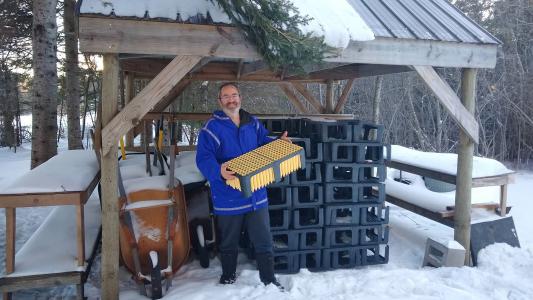California startup Ebb Carbon wants to use the ocean to pull carbon out of the air — so it’s gearing up to build the biggest carbon capture plant of its kind in Washington state.
Carbon capture 101: Slashing carbon emissions won’t be enough to prevent the worst predicted effects of climate change, according to many experts — we need to also remove and permanently store some of the CO2 we’ve already released into the atmosphere.
Some carbon dioxide removal (CDR) groups are building machines to pull carbon directly from the air so that it can be stored underground or used to make products like concrete, but others, like Ebb Carbon, are letting the ocean do the pulling for them.
Marine CDR: The ocean is a natural carbon sink, and it already absorbs about 30% of the CO2 emitted by human activity. It can only take up so much carbon before it starts releasing it back into the air, though, and the amount it’s capturing now is increasing its acidity, which can harm marine life.
Ebb has built a marine CDR system designed to increase the amount of CO2 the ocean can absorb while simultaneously reducing local acidity.
The solution traps the carbon already dissolved in the saltwater, freeing it to capture more CO2.
This system is designed to be integrated into facilities that process seawater, such as ocean research labs or desalination plants. Before the water is returned to the ocean, Ebb uses low-carbon electricity to separate it into an acidic solution and an alkaline solution.
When the alkaline solution is pumped back into the ocean, it traps the carbon already dissolved in the saltwater as “bicarbonate.” This frees the water to absorb more CO2 from the air, while also lowering the acidity level in the water, which can benefit local marine life.
The acidic solution, meanwhile, can be shipped to a partner for use in manufacturing concrete, cement, or other products — the money made from this could be combined with the sale of carbon credits to pay for the plant. Alternatively, the acidic solution can be neutralized with the addition of the common mineral olivine before being dumped back into the ocean.
Looking ahead: Ebb is already operating a marine CDR pilot plant at the Pacific Northwest National Laboratory (PNNL) in Sequim, Washington, and IEEE Spectrum has now revealed its plans to build a plant five times larger in Port Angeles, WA.
The planned facility is not yet confirmed — Ebb still needs to secure several permits, according to IEEE — but application documents indicate that the startup is prepared to begin a four-month construction process this year and then operate the plant for 1.5 years.
The big picture: According to Ebb, the new plant would allow the ocean to absorb an additional 500 tonnes of CO2 per year. That would make it the biggest marine CDR project in the world — but it’s still only enough to offset the emissions produced by about 35 Americans annually.
Geoengineering is controversial, though, and before Ebb can scale up to levels that could really make a difference in the battle against climate change, it needs to be sure its system works as hoped and wouldn’t have any unexpected negative consequences on the environment, at scale.
The Port Angeles project could help with that.
“Findings from this small-scale pilot project would help support future commercial deployments at other locations throughout the world in order to help mitigate the effects of climate change,” Ebb wrote in an application document.
We’d love to hear from you! If you have a comment about this article or if you have a tip for a future Freethink story, please email us at [email protected].





